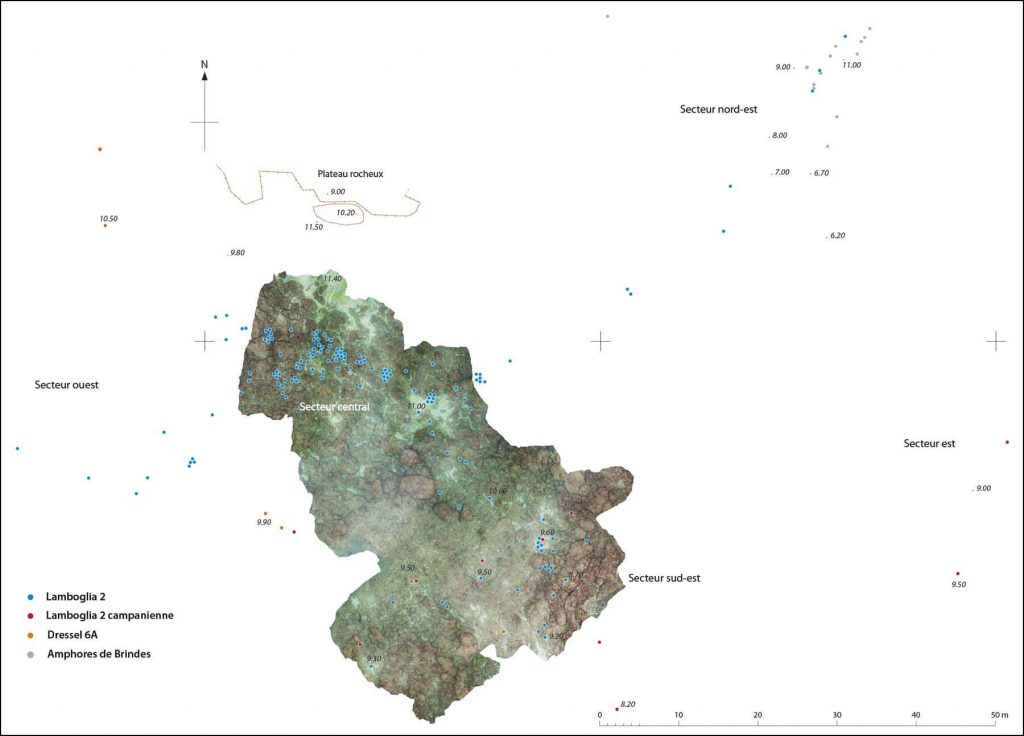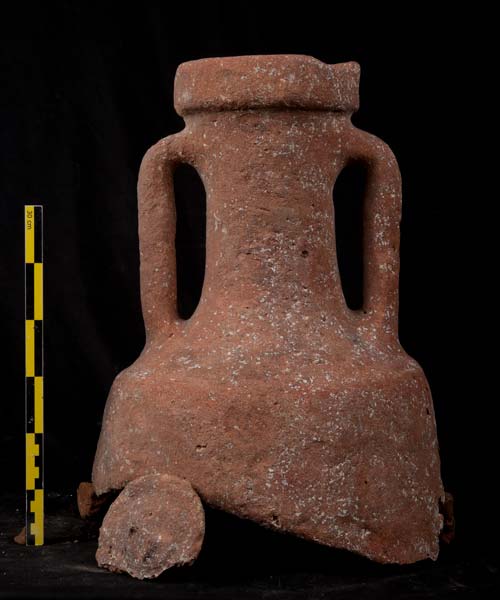
Alexandria and Mediterranean trade
Evidence of the voyages of craftsmen and the trade in foodstuffs is most clearly found in the presence of shipwrecks, and also anchors. More than 150 anchors have been discovered by three underwater archaeological missions – Egyptian, French and Greek – stretching from the edges of Alexandria’s Eastern Harbour to Maamoura, covering more than 15 km of coastline. These bear witness to the high concentration of maritime trade in the vicinity of the Egyptian megalopolis. Exploration of the QB2 wreck resumed in December 2020. It is one of the few known wrecks whose cargo consisted of amphorae produced on the island of Rhodes at the end of the 3rd century BC.
The QB1 wreck, discovered off Qaitbay Fort, provides an example of trade between Italy and Alexandria at the end of the 1st century BC.
Qaitbay 1 shipwreck
Team leader : Nicolas Boichot
The Qaitbay 1 wreck has been the subject of several underwater excavation campaigns. An initial series of excavations was carried out between 1997 and 1998 under the direction of J.-Y. Empereur, enabling much of the material on the site to be documented and mapped. Almost 20 years later, in 2015 and 2016, four new excavation campaigns were carried out with the support of the Honor Frost Foundation, with a view to completing the documentation of the site and carrying out photogrammetry of the main sectors. These have brought to light dozens of amphora necks from the wreck, adding to the number already known, and have enabled new types of amphora to be identified within the cargo.
The layout of the site
The site is located in a predominantly rocky area, almost 200 m from the shore, off Qaitbay Fort, at a depth of between 8.50 m and 11 m. It takes the form of almost exclusively fragmentary amphorae, spread over several sectors and following different patterns:
- a “central” sector, where a large proportion of the objects are grouped together in an area measuring around 20 x 15 m. The density of material here is very high, with broken amphorae often forming clusters of shards fused to the rock;
- a “south-east” sector, where amphorae are also numerous, but much more scattered and separated from one another. They are scattered along a north-west/south-east axis;
peripheral sectors where the amphorae are sometimes very scattered, following different dynamics and sometimes over great distances.

The cargo
The great majority of the cargo is made up of Adriatic amphorae of the Lamboglia 2 type, in what are known as late forms, which illustrate a typological transition from Dressel 6A. Of the hundred or so examples documented, two main variants stand out: amphorae with high, flared rims, and amphorae with high, straight rims. On the other hand, a few specimens correspond to the more classic forms of Lamboglia 2. Only a few Latin stamps have been recorded on these amphorae, but there are around 30 palm-shaped anepigraphic stamps.
There are batches of several other types of amphorae: around ten Lamboglia 2 of Campanian manufacture, known only from a few wrecks in the Mediterranean and from occasional finds on land; half a dozen Dressel 6A whose very elongated profile is no longer that of earlier transitional forms; at least a dozen amphorae from Brindisi, used to transport Apulian oil.
Petrographic analyses carried out by the CEAlex materials characterisation laboratory have enabled us to pinpoint the production area of the late Lamboglia 2 and Dressel 6A to the Picenum region, on Italy’s Adriatic coast.
The combined presence in the cargo of late Lamboglia 2, some more classical forms, and Dressel 6A with an Augustan period profile, is an indication of the fact that the shipwreck occurred at a pivotal period in the typological evolution of Adriatic production, i.e. in the last decades of the 1st century BC.
Further reading:
N. Boichot, « A cargo of Late Republican Roman amphorae off Alexandria: the Qaitbay 1 shipwreck », International Journal of Nautical Archaeology, 2021, sous presse.
J.-Y. Empereur, G. Soukiassian, « Anchors off Alexandria’s Eastern Harbour », in G. Soukiassian (éd.), Alexandria under the Mediterranean. Archaeological studies in memory of Honor Frost, Études Alexandrines 36, Alexandrie, 2015, p. 63-10.








